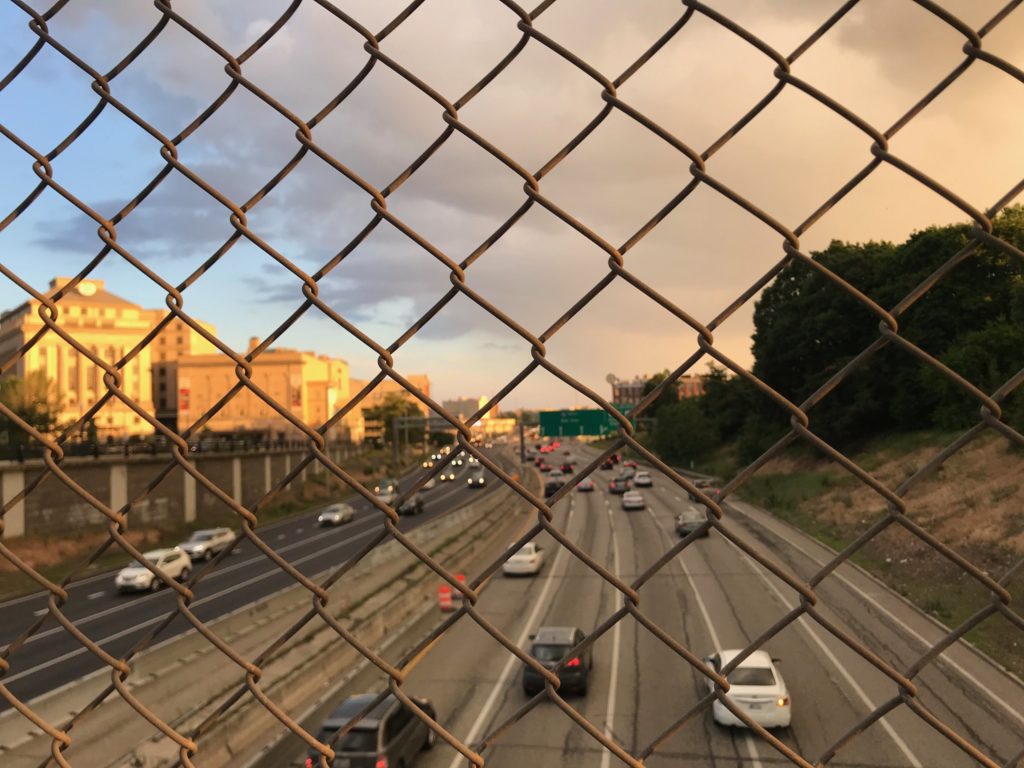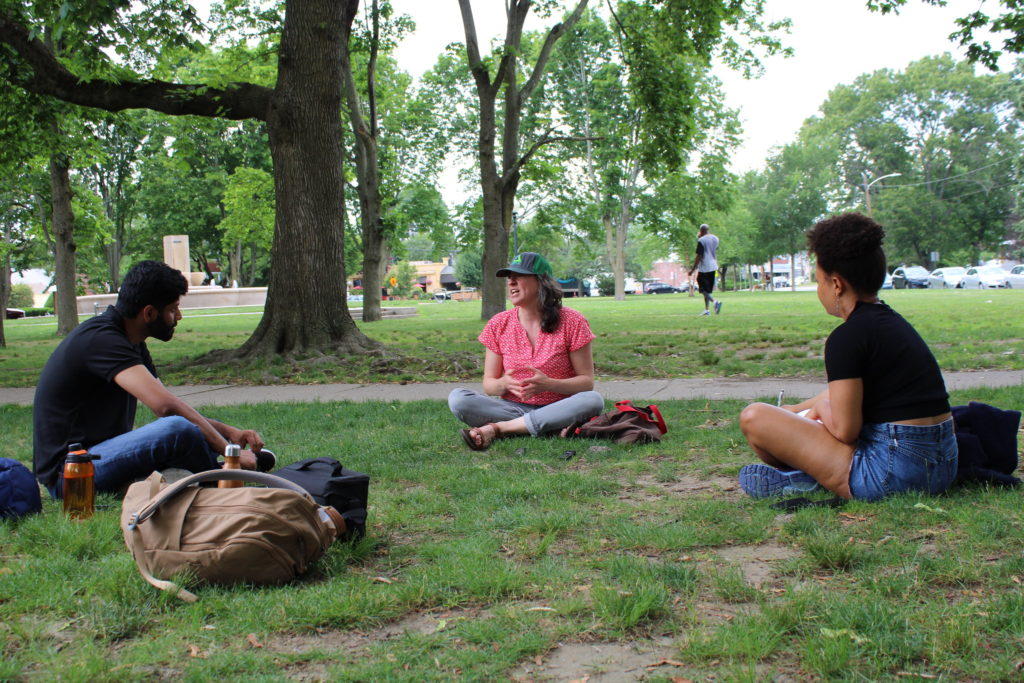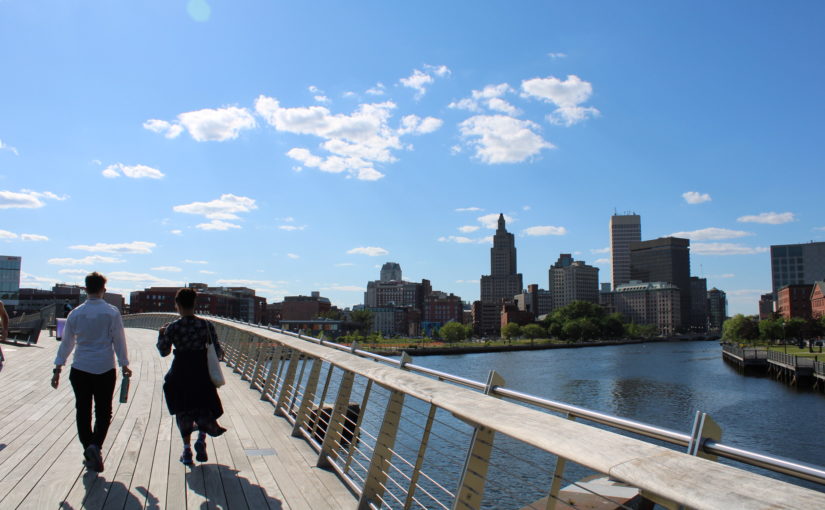by: Eduardo Pagés
White Georgia marble rises tall over an ample green lawn. Chairs lie on this pristine patio, lush trees providing a refuge from the summer heat. Sitting on the grounds surrounding the Rhode Island State House in the city of Providence, I cannot help but marvel at the beauty and openness of this public space. In my hometown of Guayaquil, Ecuador, I am more used to parks and fences, to government buildings and guards; where there are beautiful green spaces, there are also signs restricting them to certain hours, activities, and kinds of people.

This thought process of mine portrays a logic long familiar to the field of international development and to policymakers in Latin America: there can be a tendency to praise the accomplishments of our neighbors to the north, including the United States and its ranks of prominent academics, while lamenting over what we supposedly have yet to achieve in the geographic south. However pervasive to this day, this perspective obscures the fact that there are other geographies that matter.
I stand up from my chair and enjoy the protection of the shade trees one last time, then I begin my commute to Smith Hill, a Providence neighborhood less than a block away from the state’s capitol. I venture across a narrow sidewalk overlooking a plethora of lanes and cars. This neighborhood is split in two by I-95, an interstate highway connecting the entire eastern coast of the US. Once on the other side, cracked and abundant pavement greets me, and the thick smell of smoke settles into my nostrils uninvited. Under the hot sun, with few trees and thus hardly any shade, I begin to sweat.
This artificial geography provides an example of vastly different living conditions among segregated areas, including lower climate resilience within low-income neighborhoods of color. It is now well documented that segregation efforts at both the federal and municipal levels have resulted in racially divided neighborhoods within US cities. The denial of federally backed mortgages to neighborhoods graded too “risky” to lend to was one of the main public policies used for such discrimination, as lending risk assessments were dependent on both the housing stock and racial composition of an area. As documented by Groundwork RI for the city of Providence, “neighborhoods of color and those with high numbers of immigrants saw property values drop or stagnate, and with that, resident- and city-led improvements to infrastructure also stalled.”

Smith Hill and other areas that received Cs and Ds, the worst neighborhood grades, suffer from higher concentrations of impervious pavement, lower levels of tree canopy, and higher temperatures as compared to their higher-rated counterparts. The end result is what one can term a “climate injustice,” with neighborhoods of color more exposed to flooding and heat, and citizens who must thus bear a disproportionate burden of the consequences brought upon by climate change.
Such injustices committed by this artificial geography within the supposed developed world make it clear that development is not so much about a transfer of knowledge or resources from the planetary north to “solve problems in the south,” but rather an issue of the “where” and the “who” within those spaces, as nation states and cities are far from being monoliths. The term “global south” should therefore be used to acknowledge the plight of marginalized peoples within the borders of wealthier countries. The Sustainable Development Goals recognize a need for global action on this topic, including within the US, by calling unto “all countries, rich, poor and middle-income, to promote prosperity while protecting the planet.”
Investigating climate justice policy in the US
The Keough School Integration Lab’s first-ever domestic project is a recognition of this pressing global need. In partnership with the National League of Cities’ Center for City Solutions, my master of global affairs colleagues Dara-Marie Raggay, Mohammad Farrae, and I are currently interviewing stakeholders across 6 US cities in the hopes of addressing the question: How might we accelerate the ability of cities to successfully implement effective policies for climate justice and equity? Our journey has so far taken us to Washington, DC, Takoma Park, MD, Providence, RI, and Cincinnati, OH, where we have observed the unequal effects posed by climate change and structural racism, but also the creative solutions seeking to undo these wrongs.
Our project, often spearheaded by directly affected communities in conjunction with city officials, seeks to compile successful climate justice initiatives, together with common challenges, so that cities beginning their climate justice and equity journey can do so on a stable foundation of expertise.

The more we move forward, the more I have learnt by having my traditional conceptions of development work challenged, not only of where we should work, but even of who should be listened to. As we sometimes look at foreign nations, we must also look inward, giving nuance to the geographies of development that so often prevent us from seeing its global dimension. Sustainable development is needed in developing countries, in the US, and in the world.

